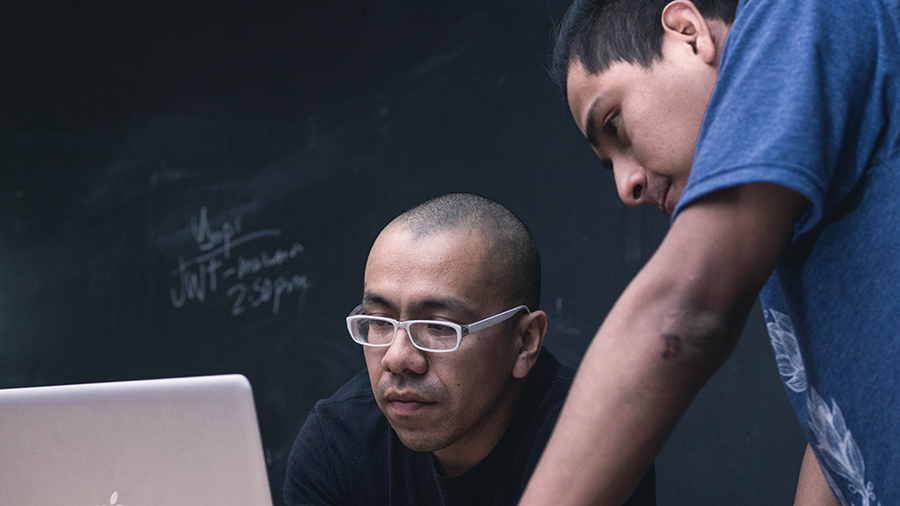A beginner’s guide
to minority professor hires
What makes a good principal investigator? What makes a great one? Often, there is a certain mold that hiring committees look for in applicants. By and large, the first two cutoffs are funding and great papers. However, most of us in the professoriate do more than acquire grants and submit papers. We advise students, sit on committees and teach–all things that are essential to being a successful professor because they show that you can juggle more than just science. Many underrepresented minorities (URMs) take on a lot of those intangible items, not only because people ask us to serve in a multitude of areas for the sake of having representation, but because we also want to be that representation. As a postdoctoral fellow looking to be hired as an assistant professor, I performed service, mentoring, teaching and more. Doing some of these intangible activities can make it hard to measure current and future success as a principal investigator, and thus, may be a major problem facing URMs looking to join a research-intensive professoriate.

How are these intangible activities scored during a faculty application review? When in the process are they scored? Are they scored?
The argument against looking deeper into the pool of applicants is that it takes time, money and lots of effort. Hundreds of applications have to be distilled down to 5 or so people to interview in-person. Practicality has to be valued, especially given the juggling act of being a professor with so many things to do. How does an institution that wants to add more URM faculty do so?
The increasing number of URM doctorates hasn’t been reflected in URM faculty hires. Despite a 930% increase in URM Ph.D.s since 1985, there has been no significant change in the percentage of URM biomedical professors at research intensive universities. The best solution is to hire more URMs, but no unilateral solutions to do so exist, or they would have been implemented already. Given this information, here are some things I propose that might help faculty searches increase their URM faculty candidates:
- Recognize and evaluate the intangibles of prospective professors.
- Talk with and seek advice from minority professors at your institution and ask them what their background was, how they got recruited and what made them feel more welcome at one place over another. Let this be the start of the conversation, not the end.
- Identify URM individuals and encourage them to apply for open positions at your university. A selection of databases to look through includes:
- Awardees of the Hannah Gray Award from HHMI
- Awardees of the NIH Blueprint Diversity Specialized Predoctoral to Postdoctoral Advancement
- Awardees of the Ford Postdoctoral Fellowship
- Awardees of the Burroughs Wellcome Fund Postdoctoral Enrichment Program
- Minoritypostdoc.org
- Diversify Microbiology
- Diversify EEB (Ecologist and Evolutionary Biologists)
- Diversify Immunology
- Diversify Chemistry
- Share job openings within groups and communities that commonly self-identify on social media, such as #BLACKandSTEM, LatinxandSTEM and #diversityinSTEM.
- Create university initiatives to encourage or facilitate minority hires, such as having a designated slot to hire a URM Faculty. Add to the prestige by naming it after a donor.
- Align your department/institution as a place that values diversity by making public statements on your webpage about diversity.
- Require new hires to submit a diversity statement with their application and make it a part of the decision-making process. It helps to surround yourself with people who value diversity.
- Re-evaluate what kind of candidate you are looking for and see if it excluded the people you talked to in the first bullet point.
- Provide URMs with a platform to present their research by inviting them to a research seminar.
- Overall, as an institution, you must be willing to spend money and time for these efforts because after all, commitment without currency is counterfeit.
This article first appeared on the American Society for Microbiology’s website, asm.org.
Enjoy reading ASBMB Today?
Become a member to receive the print edition four times a year and the digital edition monthly.
Learn moreFeatured jobs
from the ASBMB career center
Get the latest from ASBMB Today
Enter your email address, and we’ll send you a weekly email with recent articles, interviews and more.
Latest in Careers
Careers highlights or most popular articles

Upcoming opportunities
Calling all biochemistry and molecular biology educators! Share your teaching experiences and insights in ASBMB Today’s essay series. Submit your essay or pitch by Jan. 15, 2026.

Mapping proteins, one side chain at a time
Roland Dunbrack Jr. will receive the ASBMB DeLano Award for Computational Biosciences at the ASBMB Annual Meeting, March 7–10, just outside of Washington, D.C.

Exploring the link between lipids and longevity
Meng Wang will present her work on metabolism and aging at the ASBMB Annual Meeting, March 7-10, just outside of Washington, D.C.

Upcoming opportunities
Calling all biochemistry and molecular biology educators! Share your teaching experiences and insights in ASBMB Today’s essay series. Submit your essay or pitch by Jan. 15, 2026.

Defining a ‘crucial gatekeeper’ of lipid metabolism
George Carman receives the Herbert Tabor Research Award at the ASBMB Annual Meeting, March 7–10, just outside of Washington, D.C.

Building the blueprint to block HIV
Wesley Sundquist will present his work on the HIV capsid and revolutionary drug, Lenacapavir, at the ASBMB Annual Meeting, March 7–10, in Maryland.

